Hidden Cures: Chronic Sinusitis, The Most Common Disease in America
99% don't realize it's a fungal issue, and of the ones who do, 99% of them don't realize it's not actually a disease, but the bodies solution to a much bigger problem...

There’s a trope I see occasionally on social media suggesting that the cure for every disease has already been discovered and is just being kept hidden in a drawer somewhere since it would bankrupt countless powerful corporations.
This seems ridiculous to some people, but sometimes such a cure does actually exist and it’s not even locked away. It’s just laying there in plain sight, though buried in obscurity because it’s been so successfully ignored by everyone who should have disseminated the groundbreaking research findings.
Case in point: Chronic Sinusitis.
Chronic sinusitis is the most common chronic disease in the US, with over 37 million people suffering from it. If you’re in the West many of the people you know probably deal with this at some level constantly, along with seasonal exacerbations. The estimated healthcare costs associated with its treatment run between $4 and $12 billion dollars a year.
So it should have been a (medical) world shattering moment when in 1999 a trio of Mayo Clinic researchers discovered that in 96% of cases chronic sinusitis is due to an inflammatory immune response to chronic fungal presence in the nose, suggesting obviously that the cure would involve removing said fungus.
"Fungus allergy was thought to be involved in less than ten percent of cases," said Dr. Sherris at the time. "Our studies indicate that, in fact, fungus is likely the cause of nearly all of these problems. And it is not an allergic reaction, but an immune reaction."
In their study the researchers had examined 210 patients with chronic sinusitis. By using new, groundbreaking methods to collect and test mucus from the nose, they found fungus in 96 percent of the patients' mucus. They identified a total of 40 different kinds of fungi in these patients, with an average of 2.7 kinds per patient.
In a subset of 101 patients who had surgery to remove nasal polyps, the researchers discovered eosinophils (a type of white blood cell activated by the body's immune system) in the nasal tissue and mucus of 96 percent of those patients as well.
The results clearly depict a disease process in which, in sensitive individuals, the body's immune system dispatches eosinophils in response to the fungi, and the eosinophils irritate the membranes in the nose. As long as fungi are present, the irritation persists.
This news made no splash, not even a ripple in the media or medical landscape as far as I can tell. Unlike Olympic high diving, that’s not a good thing.
It obviously didn’t change any treatment guidelines, and 37 million people still suffer from chronic sinusitis 25 years later.
To their credit, the researchers, with the patience of Job, did spend the last 25 years trying to convince mainstream medicine of their findings.
In order to explain the apparent reason why they have yet to succeed and also shed light on a problem central to medical “science” and inquiry, we have to explain a cognitive bias which was first identified at least 700 years ago, so you would think we wouldn’t be suffering from it still today.
But of course you would be wrong, because modern science is not really very scientific after all.
The cognitive bias was originally explained in a story about Mullah Nasreddin Hodja, an interesting character, usually depicted riding backwards on a donkey wearing a truly massive turban. He is said to have lived in 13th century AD Turkey, and has entire collections of funny teaching stories attributed to him - some of them cross pollinated with Aesop’s fables whose provenance is at least 2 millenia older.
Thank you for reading Dr. Syed Haider. This post is public so feel free to share it.
Anyway, in most of his stories Hodja comes off as a kind of cross between an eccentric holy man and the comedian Norm Macdonald. To explain what I mean: Norm Macdonald was a very sharp guy (graduated high school at 14 and college at 16), but he understood that people don’t like a smart aleck, so he played a kind of slow-witted everyman character who in a kind of Socratic way brought people to uncomfortable realizations about their own beliefs. He explained why in an interview with Larry King:
“Bill Maher wants to be seen as an intellectual, but Letterman understands he is smarter than (that). Play the dumb guy, play the everyman, nobody likes a guy smarter than them. That’s the worst guy you can be.”
Here’s a pretty good example of Norm acting the dumb guy while doing standup (expect profanity) the night before the COVID plandemic lockdowns began (which also illustrates the subtle but persuasive way most media personalities were agents for “the regime”: e.g. at one point he cracks a joke saying, “It’s funny how Big Pharma’s so evil until now … it’s like, what is it $200 a pill? Yeah that’s good, that’s fine, I’ll take it, gimme all ya got”).
Getting back to Mullah Nasreddin Hodja, one of the illustrative “dumb guy” stories told about him goes like this:
Mullah lost his ring in the living room. After searching for a while without success, he went out into the yard to continue looking. Seeing this, his wife asked, "Mullah, you lost your ring in the living room, so why are you searching in the yard?" Mullah stroked his beard and replied, "The living room is too dark, and I can't see well. There's much more light out here in the yard, so I'm looking here instead."
Some may recognize the basic story structure, as it’s likely the source of the more famous and modern version called the Streetlight Effect that illustrates a specific cognitive bias quite common today (and presumably in Hodja’s time as well):
A policeman notices a drunk man searching for something under a streetlight and asks, "What have you lost?" The drunk man responds, "I lost my keys." They both start looking under the streetlight together. After a few minutes, the policeman asks, "Are you sure you lost them here?" The drunk replies, "No, I lost them in the park." Puzzled, the policeman asks, "Then why are you searching here?" The drunk responds, "Because this is where the light is."
When the story is told about a lost ring or pair of keys it’s quite obvious to everyone listening how ridiculous the search is, however, ironically, what the story teaches is usually lost on the most intellectual segment of society, our so-called scientists (intellectuals aren’t necessarily intelligent).
Noam Chomsky has used the story to illustrate how science generally operates: "Science is a bit like the joke about the drunk who is looking under a lamppost for a key that he has lost on the other side of the street, because that's where the light is. It has no other choice."
It’s understandable that scientists are limited by their tools, but it’s a travesty when they mistake what they can see using them for all of reality itself, i.e. assume that what they can’t see doesn’t exist.
Medical science is incredibly guilty of making this mistake as any patient with an undiagnosed “mystery” illness is well able to appreciate.
Physicians will strongly suspect that if they can find nothing wrong with their barrage of expensive tests, that there really isn’t anything wrong, except perhaps with the patient’s psyche - they are very likely to refer most of these “difficult” (to placate) patients to a psychiatrist.
So, the basic reason (or you might say excuse given for why) 25 years later everyone in medical school is still not being taught the single most important finding related to Chronic Sinusitis comes down to multiple studies that could not replicate the findings of the 1999 study, because they weren’t using the same supersensitive tests to find the fungi.
The fact that these supersensitive tests might be very expensive to run and unavailable to clinicians seeing patients doesn’t even matter.
The simple fact that there is a 96% chance that a given chronic sinusitis patient has a fungal infection would usually be more than enough in a modern clinic to warrant a test run of anti-fungal therapy. Traditional prescription anti-fungals aren’t considered particularly safe by the mainstream medical establishment, especially for the liver, but even so if this knowledge was widely disseminated to doctors they would consider it justified to at least initiate a therapeutic trial and if the patient began to improve, the slightly riskier longer course would certainly be completed to fully eradicate the problem.
The same trio of researchers who made this foundational discovery published a paper a few years later in 2002 showing that without doing any sensitivity testing on a random sample of 25 Chronic Sinusitis patients (who remember each likely had on average 2.7 different fungi), one specific anti-fungal (Amphotericin B) nasal wash twice a day led to remission of symptoms in 75% of patients, though only about half of those showed complete clearance on further testing.
The other 25% who didn’t get better likely had one or more resistant strains, or the treatment simply didn’t continue long enough to wipe them out, or the medication chosen had its own toxicity that interfered with its efficacy at eliminating symptoms (even if it did kill the fungi).
So end of story, right? If you or someone you know has Chronic Sinusitis, just visit your friendly local doc with a copy of these studies and request an antifungal, right?
Wrong.
Even if doctors took that approach seriously, which most don’t, it’s still wrong because it’s not the whole story.
It fails to understand that fungi are not the actual root cause, they’re an intermediate one and only there for good (beneficial) reason.
Does that sound bizarre, unlikely, impossible even?
Read on my friend. It is bizarre, and involves evidence from places as unlikely as the ruins of Chernobyl and as impossible as outer space.
Thank you for reading Dr. Syed Haider. This post is public so feel free to share it.
But, first to set the stage properly we need to take a brief detour to properly introduce this disease, its symptoms and how the mainstream thinks about it.
Chronic Sinusitis: Symptoms and Mainstream Classification
Everyone’s probably familiar with the symptoms of acute sinusitis: the inflammation, swelling, stuffiness, runny nose, loss of smell and sometimes pain in the cheekbones or headaches.
Chronic sinusitis is similar, but never goes away.
Also since the condition is chronic it can lead to secondary problems, first mucosal thickening and later on nasal polyps, which are outgrowths of the mucosal layer that can block the nasal passageways.
Chronic sinusitis may wax and wane throughout the year and can be worsened by allergies to pollen, animal dander and dust mites, and also be due to infections with viruses and bacteria. If an exacerbation persists beyond a week or so common practice is to blast the patient with more steroids and antihistamines than usual along with a side of antibiotics.
Even though it is demonstrably wrong, and the evidence has been with us for 25 years now, the mainstream consensus view still divides chronic sinusitis into the following 3 subtypes:
Chronic sinusitis without polyps: up to 66% of cases. The cause is up for debate, but generally thought to be initially triggered by a bacterial infection, then for some reason the immune response becomes persistent (sorry, we just don’t know why, give us a few dozen billions and we’ll get back to you with an expensive cure). Current consensus does not hold it likely that most cases are due to a chronic bacterial infection.
Chronic sinusitis with polyps: up to 33% of cases, with 15% of those showing aspirin/NSAID as a worsening factor, and some evidence suggesting hyperresponsiveness to usually harmless strains of Staphylococcus aureus bacteria.
Allergic fungal rhinosinusitis: <5%, and more prevalent in young patients in the southern US, is due to an intense allergic response to a colonizing fungus (a categorically different immune response than the Mayo Clinic researchers described in their 96% majority).
The first two subsets above make up 95-99% of cases in most studies. They are the 96% of cases described by the trailblazing Mayo Clinic researchers characterized by eosinophilic infiltration, and the last 1-5% are the allergic fungal cases, characterized by an IgE mediated allergic reaction, not present in the majority of fungal cases.
So long story short, all chronic sinusitis is actually fungal.
The Truth About Chronic Sinusitis
Before I met Hakim Shabaz I would have assumed that the picture laid out in 1999 and in subsequent research by this trio of mavericks was relatively complete. I would have thought that some combination of ill-chosen interventions and poor environmental choices had led to the fungal persistence and that the best way to get rid of it would involve generic lifestyle change to make the nose less hospitable to fungi and perhaps some combination of supplements and pharmaceutical treatments to reduce eosinophilic infiltrates and ultimately the coup de grace: kill the fungi.
Most patients who came to me would be like: nah, just give me the antifungals, and I would have been like: yeah, OK, don’t see why we can’t just try that too, it might come back, but in any case no harm, no foul, we can just cross that bridge if we come to it.
Most alternative health care gurus would probably agree in principle with the above approach.
But this is just an extension of the same flawed paradigm we get in most mainstream medicine once it identifies what it believes is the cause. It catches people who think they’ve figured it out, but in reality have only scratched beneath the surface. They think they’ve broken out of the matrix, but it’s just another matrix, not even all that qualitatively different from the primary one.
Little does he know, the real world is also a simulation. Just kidding! Actually most people eat tons of silica in their cheap supplements, it just goes by other names like silicon dioxide, “rice hull extract”, “rice flour”, etc. But not the supplements at mygotostack.com!
What is lost is an appreciation of the incredibly intricate and interconnected nature of all things and the realization that the symptoms are not the disease, they are simply evidence of your body responding to an impossible situation in the best possible way.
Interventions that interfere with your body’s ability to maneuver around within the grand scheme of things will just obstruct your body's ability to bring balance to the situation, and will lead to further problems.
But perhaps the biggest failing is a lack of imagination of just how deep the rabbit hole can go, just how many layers might be involved, that what you think is the root cause is just an intermediate cause in a stack of other causes. It’s not turtles all the way down, but it could be a few turtles before you hit the ground truth.
Perhaps the very best functional medicine practitioners might have dug one layer deeper beyond the fungi and actually understood there was a reason they were present. The key to all this lies in understanding what fungi are capable of, which points to why they are there in the first place.
First of all, they are far more pervasive in nature than almost anyone imagines, and by extension, probably far more pervasive within our own bodies.
They permeate the soil, the ocean floor and all plants - their mycelia, an extensive network of fine filaments that spread out from them, actually penetrate in between plant cells. It used to be thought they were harmful to the plants, but we later learned they formed an important part of plants' immune systems.
Paul Stamets, a celebrated and award-winning mycologist, is perhaps the premier world expert on fungi. He explains that they are nature's cleanup crew, tackling a wide range of pollutants, including oil spills, heavy metals, pesticides, and more.
When mushrooms are exposed to contaminated environments, their mycelia can absorb and accumulate pollutants. As the mycelia grow, they release enzymes that break down and neutralize toxic chemicals, transforming them into less harmful compounds. In the case of heavy metals, such as lead, mercury, or cadmium, the mycelia can bind these metals to their structure, effectively immobilizing them and preventing them from leaching further into the environment where they would cause harm. The mycelia also enhance soil health by improving its structure and nutrient content, creating a more favorable environment for other microorganisms and macroorganisms to thrive.
Amazingly, fungi even neutralize harmful radiation in the environment.
They grow in response to and soak up non-ionizing radiation like WiFi and Cellular networks and even ionizing radiation that mutates and kills other organisms.
When scientists realized “radiotrophic” fungi grew towards Chernobyl and soaked up the ionizing radiation there, they decided to study if fungi could be used to protect astronauts by forming a natural barrier to cosmic rays. The experiment was successfully run in 2018-19 on the International Space Station.
Thank you for reading Dr. Syed Haider. This post is public so feel free to share it.
Fungi are an integral part of the planet’s ecology, of plant’s ecologies and of ours.
Most people have a misconception of the human microbiome. They think it’s primarily or only made up of bacteria. In fact it is composed of any and all microorganisms, including bacteria, viruses, parasites, and fungi.
There is evidence suggesting that in some locales the native people were colonized by certain parasites which bolstered their immune systems. Some people in the dark corners of the internet even order therapeutic parasites and infect themselves with them in order to treat the symptoms of auto-immune diseases.
Even what we traditionally conceive of as “bad” microbes are not necessarily bad, they are simply a reflection of the environment we provide to them, and may actually be helpful in dealing with that environment.
Since fungi are especially powerful toxin neutralizers, the real underlying problem is the toxins in our environment that have leached into us and are radiating into us all the time (WiFi, cell networks). Fungi proliferate to help bind or otherwise neutralize those toxins, in other words to protect us from them.
And the symptoms of sinusitis, and other diseases, are themselves often part of the solution too, for example, the mucus forms an escape vehicle for some of the overflowing excess toxicity.
And it’s not just physical toxins that can affect our nose and other organs, things like chemicals in the air we breathe, heavy metals, microplastics, pesticides, etc, but also mental, emotional, and spiritual ones as well.
An imbalance in one area must be balanced out somewhere else because our being at every level is like an interconnected hydraulic pressure system. Apply pressure in one place and something’s gotta give somewhere else.
Someone might have been taught as a child that love came with strings attached, so as an adult they feel insecure in relationships and avoid conflict, putting a nice face on everything. What is bottled up and goes unexpressed in their relationships has to be expressed somewhere else. Their immune system may become a badass as a counterbalance to their superficial nice-guy persona. Their frustration is expressed within their own bodies since it’s not being expressed in their relationships. Blocking this immune expression by suppressing the symptoms can have severe consequences as the pressure is again redirected elsewhere, in some cases causing total blowouts in more sensitive systems in the form of strokes or heart attacks.
But, everyone’s exposed to toxins in the modern world, and less than 20% have chronic sinusitis, so what gives?
Either there is some congenital weakness in a patients constitution in the sinuses, or more likely some insult, be it physical, mental, emotional or other, led to a weakening of the sinuses.
In one patient the inciting factor was riding a motorcycle in cold weather for prolonged periods, having harsh, cold air shooting through his sinuses and depleting their vitality.
Another patient perceived everything around him as hateful, at an energetic level akin to being constantly exposed to “bad odors”, which also likely impacted the vitality of the sinus passageways.
On the other hand, even overuse of good scents like natural perfume can have a similar depletive effect on vitality, since we are already surrounded by pervasive unnatural scents - the issue in this case is simply overuse of that particular faculty, either energetically or physically, thereby exhausting it.
Another subtle cause can be conscious or subconscious pride and arrogance as described by Earle Barron in his 2010 journal article Allergy and Spirituality, where he quotes Robert Ebert, PhD, who wrote, “Disdain is a principal emotion in allergic reactions.”
Uncovering these deeper causes is imperative for opening the way to healing and especially in order to prevent recurrence.
However it may happen, once the sinuses become energetically depleted, various physical toxins collect because there is a depleted functional ability to expel them. These toxins can include those introduced in the air we breathe, e.g. air pollutants like smog, and VOCs from indoor furniture, as well as those brought to the sinuses via the bloodstream, including heavy metals, microplastics, forever chemicals, etc.
Often medical interventions are also involved in this process of ongoing toxic buildup as most colds and episodes of acute sinusitis are immediately suppressed with antihistamines and often over-the-counter intranasal steroids, or even oral steroids, all of these interventions preventing the attempted expulsion of excessive toxic substances in the mucus.
Thank you for reading Dr. Syed Haider. This post is public so feel free to share it.
What begins as a viral trigger for acute symptoms, due to suppressive bandaid “treatments,” may convert into a stronger bacterial one, which is then itself suppressed with antibiotics.
Then the same problem often starts recurring during seasons when conditions are optimal and the body decides to try again to release whatever toxins have built up in the sinuses, only to be rebuffed just as strongly by our bandaid “solutions” to the perceived problem, that is actually the body’s attempt to give us a long term solution.
Immune dysregulation can be further triggered by vaccines, allergy shots, and also various bacteria, viruses and parasites. Eventually, through repeated rounds of misunderstanding leading to mistreatment, the various physical toxins become more deeply rooted and fungi along with their biofilms develop in order to sequester the various toxins and minimize damage to host tissues.
Fixing this complicated mess requires going all the way back to the inciting factor, determining what initially led to a lack of vitality in the sinuses, usually a combination of physical, emotional, and psychospiritual factors. Patients need to stop overusing the sinuses not only physically, but also reduce the mental and emotional energies that manifest themselves in that region.
Then we have to help the body in the long overdue process of finally eliminating all the chemical and heavy metal toxicity that has built up by stopping further exposures as much as possible, opening pathways of final elimination (bowels, urinary tract, etc), and gently aiding the release of toxins from the sinuses. This involves not only providing the body with an optimal environment for regular functioning, but also making some specific short term therapeutic interventions like targeted elimination diets.
After that, various antimicrobial treatments may be used along with biofilm disruptors.
Initiating this too soon can be overwhelming due to resulting “Herxheimer” toxin dumping reactions.
Anyway it’s foolhardy to eliminate something too soon when that thing is there for a good reason. First eliminate the reason the fungus has proliferated and only then start to cull the herd, and continually dispose of the mess that itself will create (fungal debris, released toxins). Stronger antimicrobials are a last resort, because ultimately the microbes are our friends and we may need them to step in again in the future. It may not be necessary, advisable or even possible to completely eradicate the “offending” fungi (since we are living in a toxic soup comprising our air, water, food, and pervasive non-native radiation from WiFi, cell towers, neighborhood power lines and transformers, home smart meters, microwaves, and even the electricity in our walls).
Proper treatment will help the immune system gradually shift from a TH2 adaptive response causing inflammation and allergic symptoms, to a TH1 innate response more suited to rooting out any overgrown microorganisms, including fungi.
So simply killing off the fungus in the nose without addressing the toxin buildup that led to their overgrowth in the first place will leave the real underlying problems to worsen, sometimes in an explosive way, since the toxins held by the living fungi will be immediately released into tissues once they die. Sooner or later this manifests in a similar or more severe disease, often neurological in nature, since parts of the sinus cavities are directly adjacent to the brain.
We wouldn’t be surprised if someone underwent exclusive anti-fungal treatment for Chronic Sinusitis and shortly thereafter developed rapid onset brain fog or even full blown dementia due to various toxins.
Mainstream physicians are entirely off base simply dealing with the ramifications of the problem, the inflammation, not even seeing the fungi underlying it. Even without killing off the fungi, their mistreatment of the issue will only lead to worsening of the underlying problem, since they suppress symptoms at an even more superficial level.
Without the symptomatic band-aid treatments, it’s possible many chronic cases would have eventually just resolved themselves.
The best you’ll get from a mainstream doctor is “just put up with it.” Middle of the road bad advice would be “cover it up with medication.” And the worst outcome is: “you have to do surgery.”
The mainstream approach is basically what we were warned about back in Kindergarten with that old nursery rhyme about the old lady that swallowed a fly, and then swallowed a spider to catch the fly, I don’t know why, perhaps she’ll die, then swallowed a bird to catch the spider, and on and on until dozens of verses later she swallows a horse and then she’s dead of course!
The terrible thing is that although it’s clear in the story why she died, it’s not at all clear in real life when a patient loses one nagging symptom and then gets hit with something else as bad or worse a few months later.
No one usually connects what was done in the first place to what happened next, because most people don’t understand what’s going on.
The right way to deal with problems so you don’t just compound them is a lot more complicated than the mainstream wrong way (suppress it, do surgery) or the alternative easy way (find one of the 0.01% of docs who actually knows it’s fungal and agrees to blast it with antifungals).
Again you have to stop the incoming toxins, gently remove the existing toxins and gradually shift the ecological balance so the mold stops growing and then slowly remove the mold while continuing to soak up the toxins released by that process and eject them from your body.
It’s a delicate procedure akin to performing brain surgery over the course of months.
But it’s also quite demanding, like trying to invade the Russian heartlands in the dead of winter.
And like any military campaign the best laid plans go out the window as soon as the bullets start flying. Unexpected things happen. You may have to change your approach. Something unexpected may be lying in wait that gets uncovered and needs to be dealt with.
Just as there’s no generic battle plan that can be drawn up for a long military campaign there’s no generic protocol we can give you for chronic sinusitis.
Every case is as unique as a fingerprint.
Thank you for reading Dr. Syed Haider. This post is public so feel free to share it.
Treatment Done Right
One of our patients had severe chronic sinusitis with multiple polyps. His condition was so severe he was plagued by brain fog and extreme fatigue. Work was distressing and he felt compelled to suppress his feelings about it.
Here’s the assessment he got from the top ENT specialist in his area:
“(The patient) has significant sinus disease. His Sphenoid sinus disease will be contributing to his headache. (He) needs sinus surgery. I have also advised him that should he develop a severe headache with fever that he goes urgently to (the) Hospital. I have seen similar patients develop clotting in the cavernous sinus (vein next to the sphenoid sinus), paralysis of the eye muscles and meningitis.”
The thing mainstream doctors are best at is frightening patients into compliance with their recommendations.
They will take a single highly unusual occurrence, especially if they’ve personally witnessed it, and highlight it to convince patients they need an extreme intervention.
This approach can effectively curse someone via the nocebo effect (the harmful opposite of a placebo effect), i.e., the irrational fear evoked could itself, via inflammatory neurological pathways, contribute to the “predicted” clotting, paralysis and meningitis.
Too often medical outcomes are just self-fulfilling prophecies.
This patient was frightened enough that, against our advice, he decided to check in to the hospital for surgery. Complications ensued with the patient in the OR just ahead of him, and that procedure took 3 times longer than expected. Our patient happily took this as a sign from God and checked out of the hospital and decided to commit himself to the wholistic approach we had outlined.
After only a short while following his deeply individualized protocol, the 10 year old chronic sinusitis began to improve dramatically.
Motorcycle Mayhem
The patient who used to enjoy long, cold motorcycle rides had chronic sinusitis for 8 years that led to loss of smell and polyp formation. The only option he was given was also surgery. He was in great shape, generally healthy and active, ate clean, and willing to try anything. Before coming to us, he had consulted three naturopathic doctors and five allopathic doctors. Among other things, he had tried netipot sinus rinses with saline every night (all told for 1 year); the Maffetone ketogenic diet twice, elimination diets separately for dairy (40 days), gluten (40 days), and wheat (40 days), allergy testing, various natural plant extracts, and homeopathy.
With us he was put on a strict dietary protocol, given stress management advice, and went through a detailed and prolonged step by step protocol over the course of months that included things like powdered and fresh Turmeric root as a mild antimicrobial, garlic as an antifungal, Triphala as an antioxidant and drainage remedy, Cistus tea as a gentle biofilm disruptor. And most importantly chlorella a natural detox agent. It took time, but eventually he reached a tipping point and his symptoms rapidly dissipated.
You might notice his treatments were relatively subtle, nothing overwhelmingly powerful. Most people over do things most of the time, using a bazooka when a hammer would do. This might hit the nail on the head, but it will also obliterate the entire house, point being using a heavy hand in delicate systems like the human body can lead to severe consequences sooner or later (which reminds me: you can’t “hack” biology without hacking it to pieces).
Afterwards he wrote of the experience, “Because the human body is a single whole and not a collection of individual parts as mechanistic science treats it, I enjoyed other benefits as a result of the protocols. Elevated lipids declined to the lowest level in years, skin cleared, fat burning improved, and energy levels increased.”
Another key takeaway from his case was that he never thought he had any issues with stress and mood regulation. We kept emphasizing relaxation and de-stressing, but he always insisted he was already feeling optimal, he didn’t think he was stressed at all. However after the program, he was very surprised to discover just how far away he had always been in his life from feeling truly optimal.
Most of us have probably never felt or functioned as well as we could because we were conceived in a toxic soup, swimming in it, inescapably, from our very first moments in the womb. Most bodies need a little or a lot of help detoxifying all the junk that has accumulated.
What Now?
I know that most who have Chronic Sinusitis and want to get better will take all this information and go try to find their own way. Godspeed. Some patients have the time, interest and perseverance to become experts in their own conditions, the ingenuity to figure it all out by themselves and the grit to put up with whatever discomfort may come of their trial and error.
But, if you want to get better as fast as possible with minimal risk while avoiding common pitfalls, just go to an experienced all-natural healer.
.


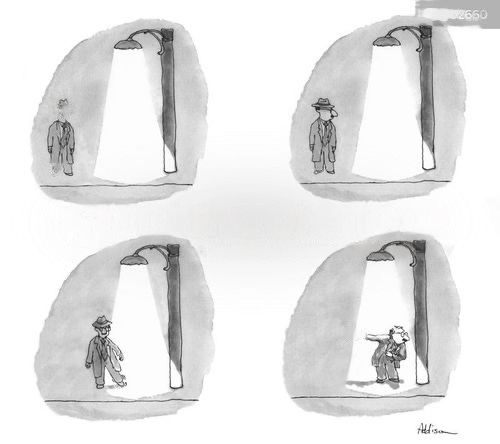
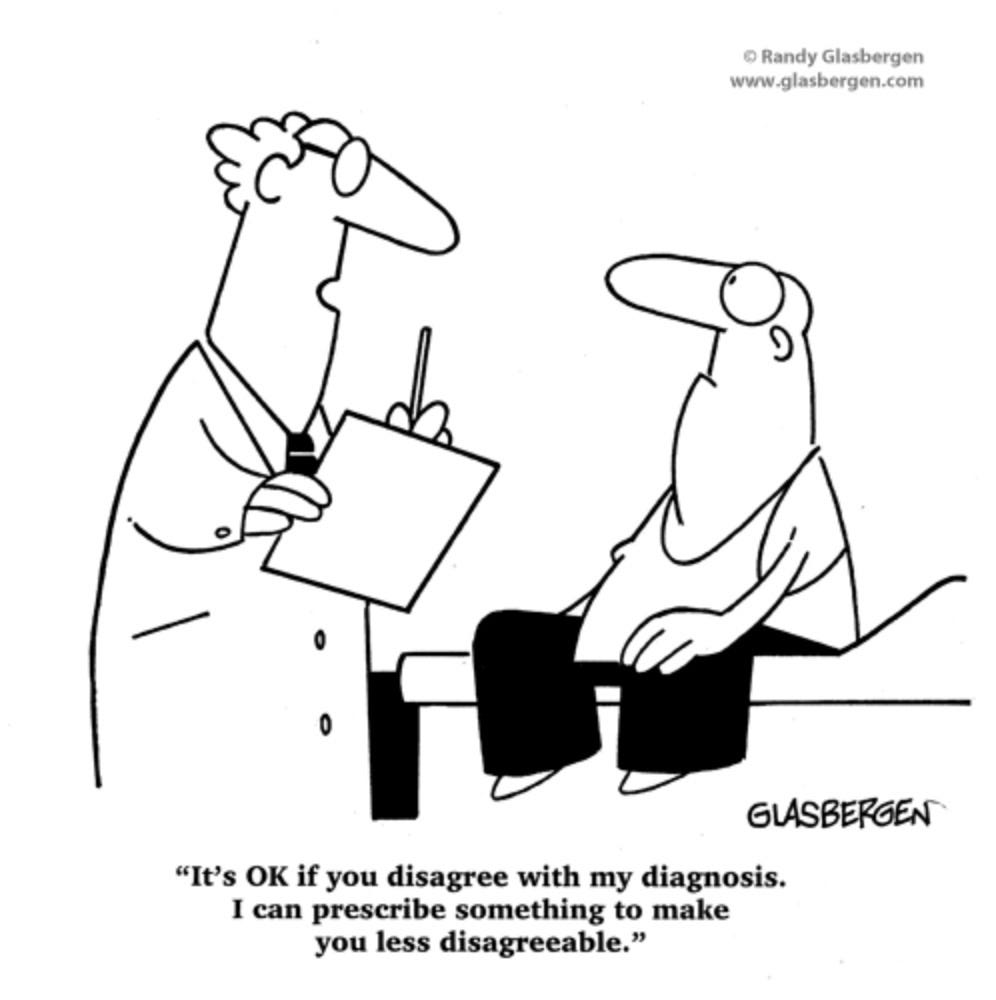
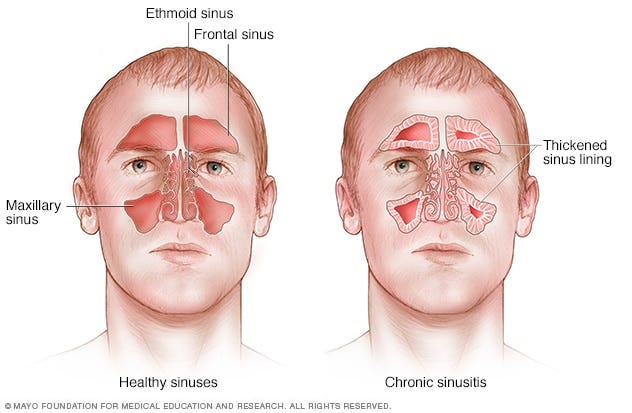
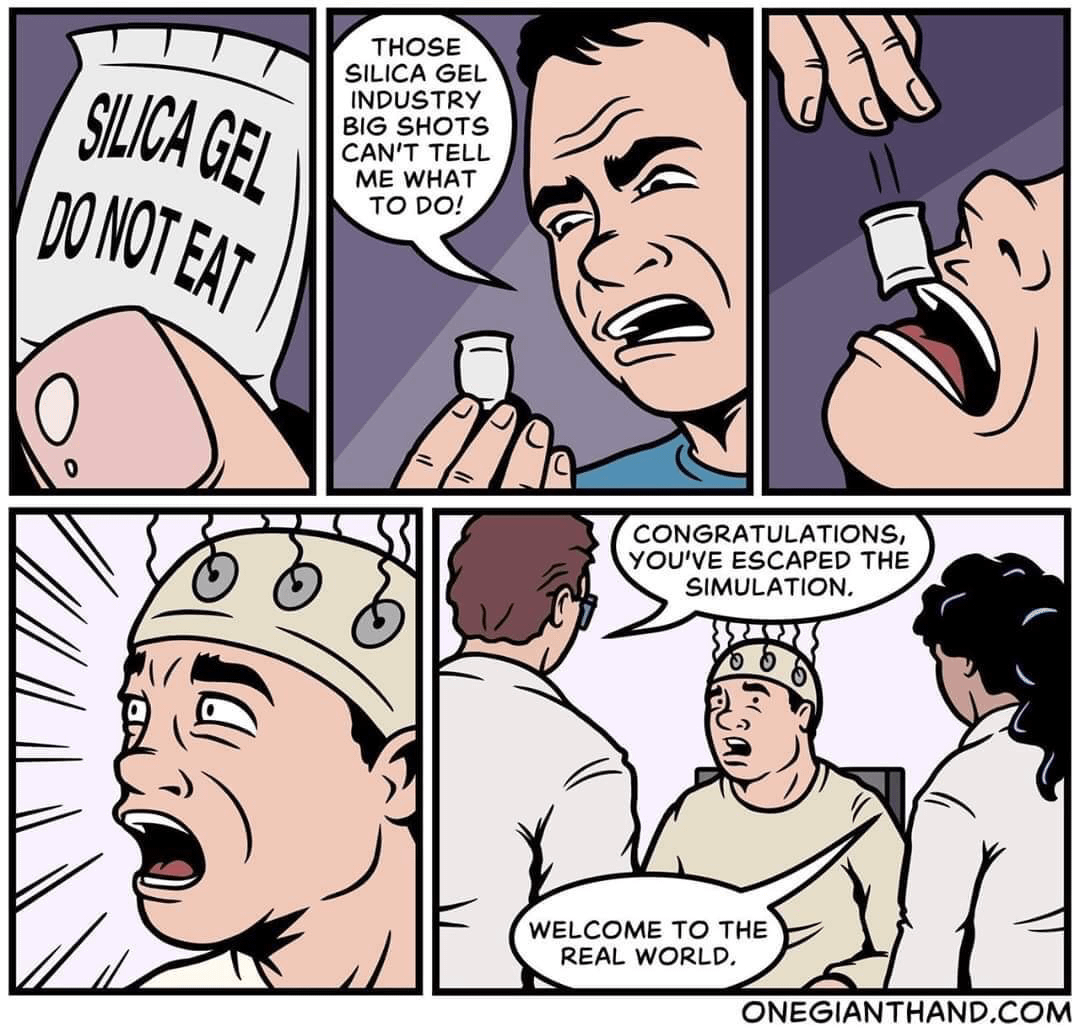

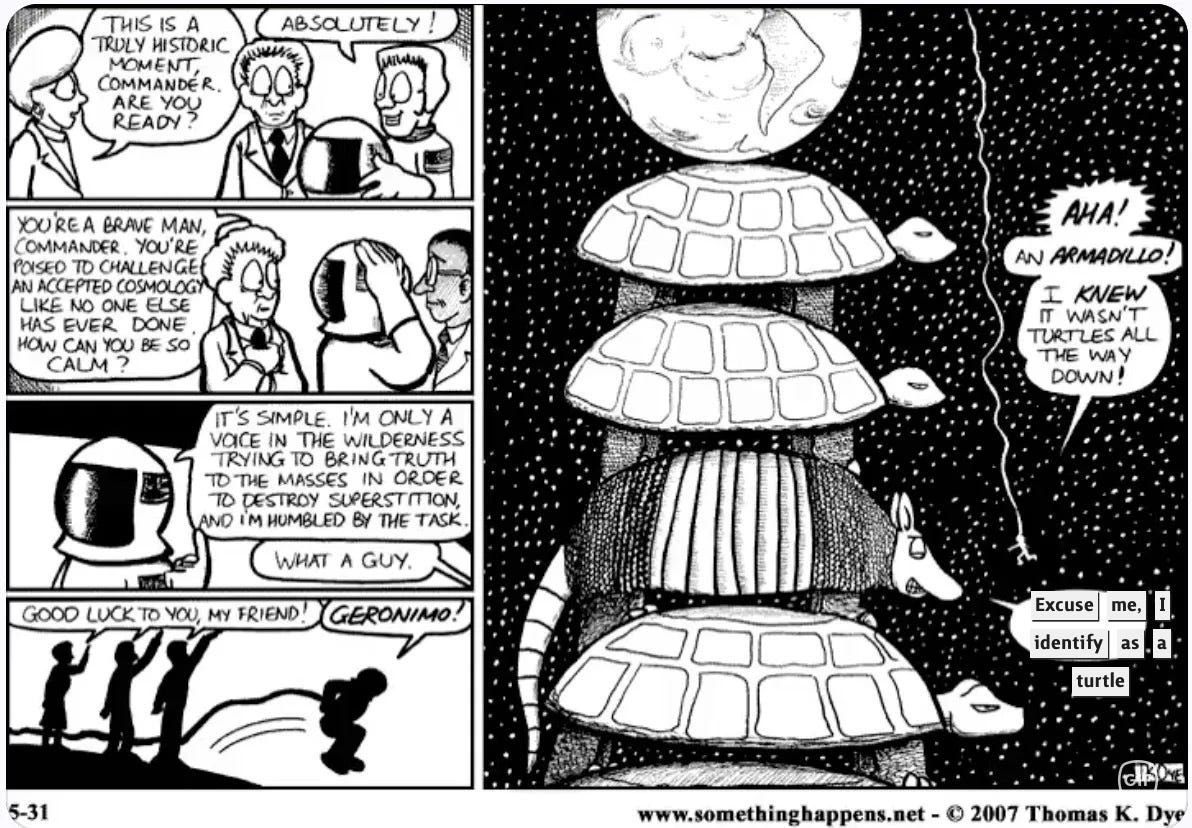


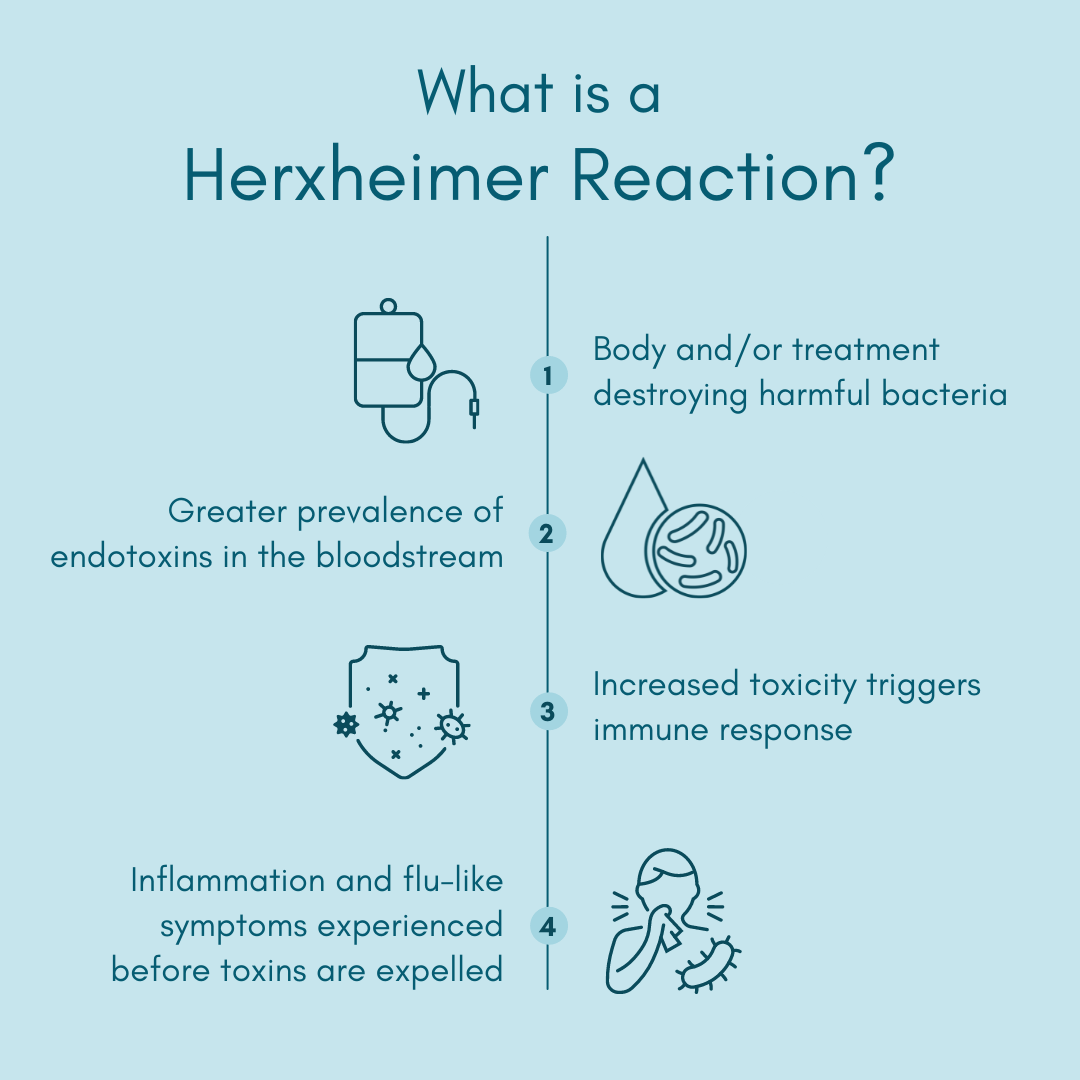
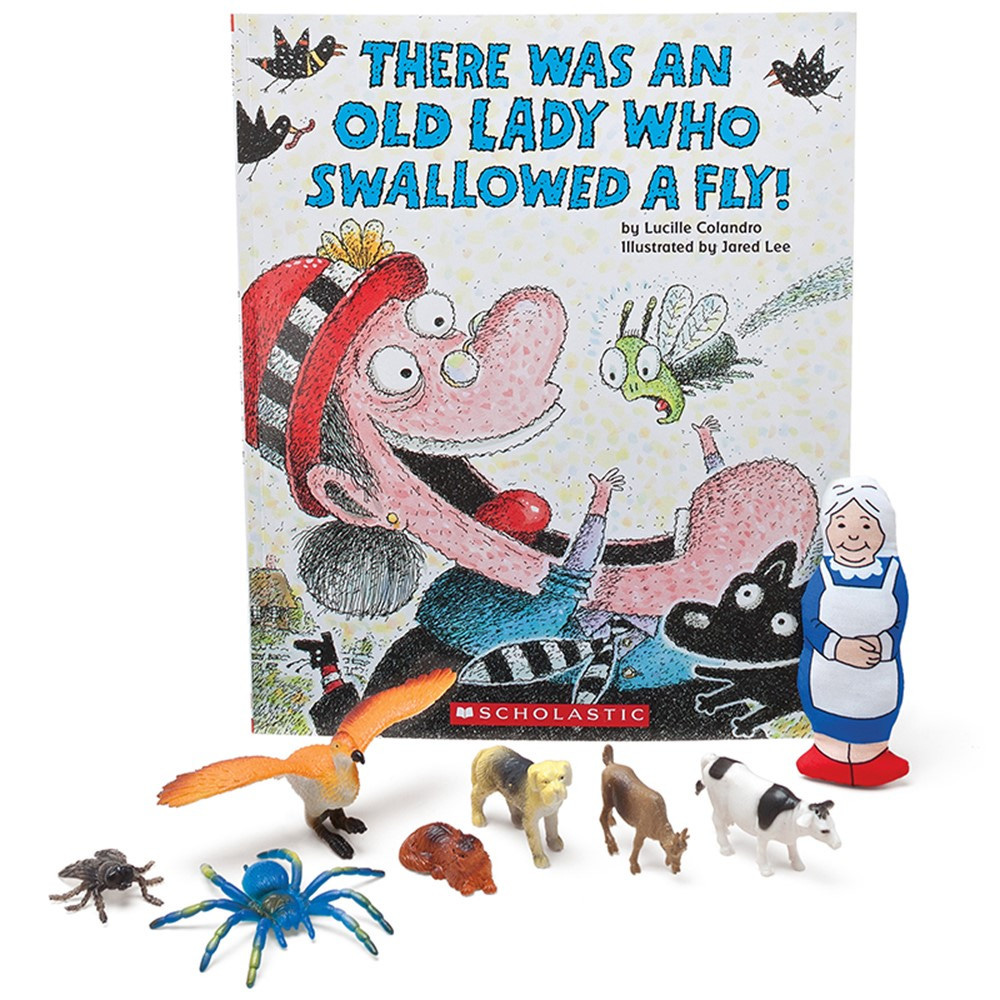



No comments:
Post a Comment